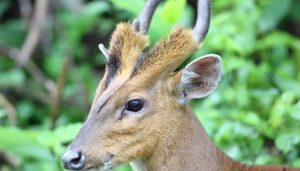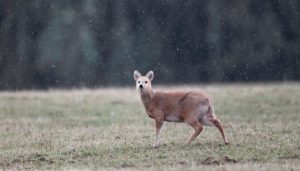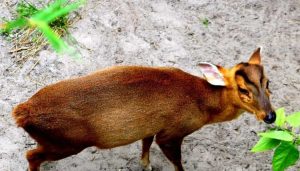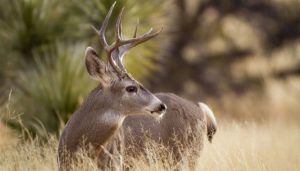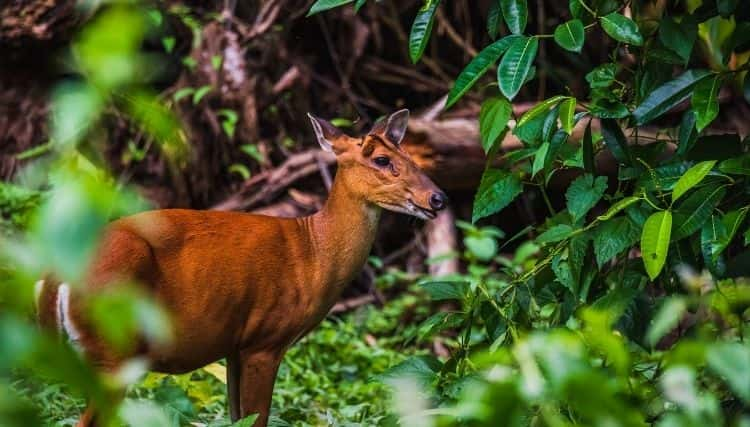
The Enigma of Fea Muntjac: Unraveling the Mysteries Surrounding the Mesmerizing Habits of these Enigmatic Creatures.
Imagine walking through a dense Southeast Asian forest when suddenly, a small deer with mesmerizing dark brown eyes and delicate white spots appears before you. You have just encountered the mysterious Fea’s muntjac (Muntiacus feae), an elusive and lesser-known species of deer. In this blog post, we will embark on a journey to uncover the hidden secrets of the Fea’s muntjac’s behavior, exploring their habitat, social structure, foraging patterns, communication, and ecological significance.
The Fea’s Muntjac: A Closer Look at its Habitat and Distribution
The Fea’s muntjac calls the lush forests of Southeast Asia home, primarily inhabiting areas of Vietnam, Laos, and Cambodia. These elusive creatures thrive in a variety of habitats, ranging from dense forests to the outskirts of agricultural areas. They can adapt to evergreen and deciduous forests, showing remarkable resilience in their choice of dwelling.
Understanding Fea’s Muntjac Social Structure and Reproduction
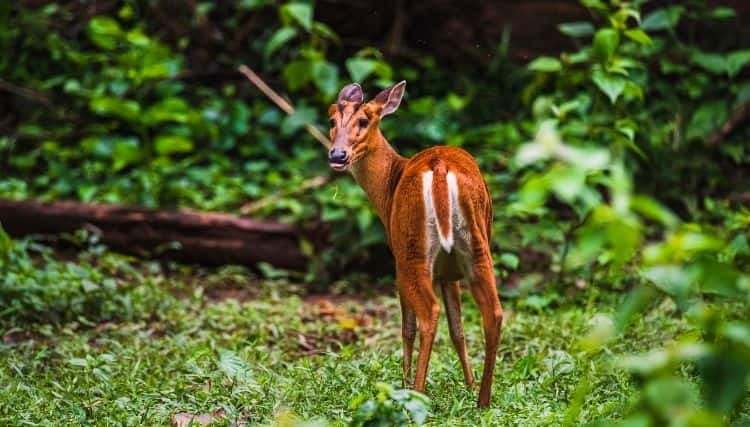
In the realm of social dynamics, Fea’s muntjac takes the path less traveled. Displaying a solitary nature, these deer tend to keep to themselves, limiting interactions with other individuals of their kind. This aloof behavior adds to their enigmatic charm. However, during the peak of mating season, they become more sociable as bucks compete for the attention of does.
Mating rituals among Fea’s muntjac involve a fascinating combination of territorial marking, scent communication, and vocalization. Bucks secrete musk from their preorbital glands to mark their territories, signaling their presence and readiness to be interested. Courtship often involves gentle nudges, sniffs, and vocal exchanges, during which the bucks emit low-frequency calls to attract mates.
Foraging Patterns and Dietary Preference of Fea’s Muntjac
Fea’s muntjac holds the key to its survival through its ability to adapt its food choices. These deer have a diversified diet, encompassing fruits, leaves, shoots, and grass. They are particularly fond of consuming fallen fruits and nuts, making them valuable seed dispersers within their ecosystems.
The foraging patterns of Fea’s muntjac revolve around browsing behavior that allows them to feed selectively on different vegetation types. They adjust their preferences depending on seasonal variations in food availability or personal dietary requirements. Their adaptability to different plant species contributes to their ability to thrive in various habitats.
Communication and Vocalization in Fea’s Muntjac

While Fea’s muntjac may not be the most vocal member of the deer family, they possess a diverse range of vocalizations. This includes alarm calls to warn others of potential danger, maternal calls to communicate with their young, and courtship vocalizations to attract potential mates. These calls often consist of short bursts of sound, which can carry quite a distance in the forest’s thick foliage.
Interestingly, Fea’s muntjac also communicates using non-vocal methods such as scent marking and visual displays. They have specialized scent glands located on their legs and above their eyes, which they use to mark their territories and leave behind a unique scent profile. They also engage in hoof-rubbing behavior on trees to assert their presence within the forest.
The Role of Fea’s Muntjac in Ecological Balance
Fea’s muntjac may be small in stature, but they play a vital role in maintaining the intricate balance of their ecosystems. As seed dispersers, they assist in the growth and regeneration of forests by spreading seeds through their digestive system. This contribution aids in plant diversity and ensures the continuation of various tree species.
Unfortunately, the Fea’s muntjac faces numerous conservation challenges. Habitat loss due to deforestation, the encroachment of human settlements, and the impact of invasive species pose significant threats to their survival. Increased hunting pressures, driven by the demand for bushmeat and the illegal wildlife trade, further exacerbate their plight.
Conclusion
The Fea’s muntjac, with its elusive nature and intriguing behavior, continues to capture the imagination of wildlife enthusiasts worldwide. Through understanding their habitat, social structure, foraging patterns, and communication methods, we gain not only a glimpse into their world but also an appreciation for their role in the delicate ecological balance.
As we uncover the hidden secrets of the Fea’s muntjac, we are reminded of the importance of conserving their habitats and protecting these captivating creatures for future generations. Our collective responsibility is to ensure their survival, allowing their mystique to endure and their place within Southeast Asian forests to remain steadfast.
